Ever since the other night when I had so many beautiful dreams, I've wanted to repeat the experience. But the subconscious does what it wants, and last night I dreamed of the beach again, but it was not a pleasant dream--no snow falling like flower petals into the sea.
Instead, the dream was discomfiting, although it has been hard for me to say why. Tonight as I was going through a poetry anthology, I found a poem that felt familiar, though it was only a familiarity-in-strangeness. I don't recall ever having read the poem before, and the event described in the poem is not exactly like that of my dream. Still, the poem captures the eeriness of my dream.
"Head of a Doll" by Charles Simic:
Whose demon are you,
Whose god? I asked
Of the painted mouth
Half buried in the sand.
A brooding gull
Made a brief assessment,
And tiptoed away
Nodding to himself.
At dusk a firefly or two
Dowsed its eye pits.
And later, toward midnight,
I even heard mice.
There is a sense of menace in this poem. The doll is no mere toy but a talisman which carries the speaker into a realm of deep mystery.
For centuries dolls have housed powerful spirits. Kachinas, for instance, are an important part of Pueblo cosmology. In the fairy tale, "Baba Yaga," Vasilissa carries a doll which is animated with the spirit of her dead mother. The speaker recognizes that the doll--whether god or demon, is representative of an unassuageable fear.
It doesn't take the "brooding gull" long to size up the situation. He nods and tiptoes away, quite the way anyone might act when encountering a deep, inevitable, and perhaps uncomfortable truth.
In the Baba Yaga tale, the doll's eyes shine like fireflies with the spirit of the girl's mother. In Simic's poem, however, the fireflies do not animate the doll but call attention only to its dilapidation. The mice, nocturnal creatures associated with wastage and death, complete the thought: This is a poem of change and disintegration, about the ravages of time.
My dream was also about change: loss and disintegration. In the dream, I was younger. I was married to a man whom I did not recognize, a man much different than my husband in real life. The dream-husband was selfish and vain. He couldn't love me because he only loved himself. We had a child. The child and I went for a swim and then came back onto the sand.
I left a child on the beach alone. When I returned, the child was gone. I called and called, but nothing answered. A little ways into the surf was a broken statue of a mother with child.
I believe I dreamed this at least partly in response to the death of John Travolta's son, which happened in the Bahamas. Upon hearing of the death, I felt the loss myself, though I could not situate the feeling exactly.
Simic's poem identifies the origin of the pain as somewhere ancient, as part of my genetic memory. In another poem, Simic explains further. He writes of how we may come to our understanding of life.
He says it's like fishing in the dark: our thoughts are hooks, our hearts the raw bait.
Wednesday, January 07, 2009
Subscribe to:
Post Comments (Atom)
Pages
Dreaming
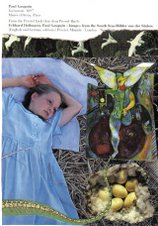
About Me

- Theresa Williams
- Northwest Ohio, United States
- "I was no better than dust, yet you cannot replace me. . . Take the soft dust in your hand--does it stir: does it sing? Has it lips and a heart? Does it open its eyes to the sun? Does it run, does it dream, does it burn with a secret, or tremble In terror of death? Or ache with tremendous decisions?. . ." --Conrad Aiken
Followers
Facebook Badge
Search This Blog
Favorite Lines
My Website
Epistle, by Archibald MacLeish
Visit my Channel at YouTube
Great Artists
www.flickr.com
This is a Flickr badge showing public photos from theresarrt7. Make your own badge here.
Fave Painting: Eden
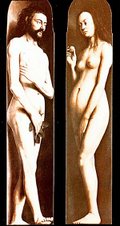
Fave Painting: The Three Ages of Man and Death

by Albrecht Dürer
From the First Chapter
The Secret of Hurricanes : That article in the Waterville Scout said it was Shake- spearean, all that fatalism that guides the Kennedys' lives. The likelihood of untimely death. Recently, another one died in his prime, John-John in an airplane. Not long before that, Bobby's boy. While playing football at high speeds on snow skis. Those Kennedys take some crazy chances. I prefer my own easy ways. Which isn't to say my life hasn't been Shake-spearean. By the time I was sixteen, my life was like the darkened stage at the end of Hamlet or Macbeth. All littered with corpses and treachery.
My Original Artwork: Triptych
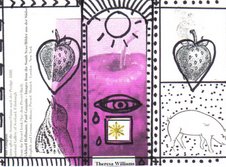
Wishing
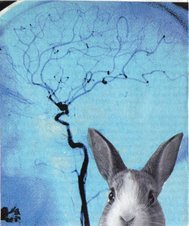
Little Deer
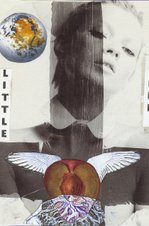
Transformation
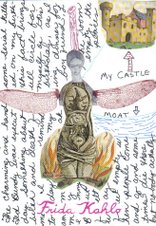
Looking Forward, Looking Back
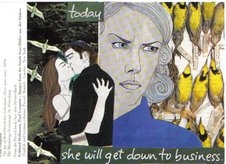
Blog Archive
-
▼
2009
(273)
-
▼
January
(35)
- The Mysterious Life of the Heart
- Haiku #124
- Haiku #123
- Haiku #122
- Haiku #121
- Haiku #120
- Haiku #119
- Haiku #118
- Haiku #117
- Haiku #116
- Haiku #115
- 25 Random Things
- Haiku #114
- Haiku #113
- Friends
- Haiku #112
- Haiku #111
- Haiku #110
- Haiku #109
- Bathtub Dream
- Creative uses of Twitter
- Haiku #108
- Haiku #107
- Haiku #106
- The Sudden Story II
- Haiku #105
- The Sudden Story
- The Breakout
- Dreams II: Our Thoughts Are Hooks
- The Rilke Project III
- The Rilke Project II
- Dreams: seascapes and wishing wells
- The Rilke Project
- The Harlequin
- Jack Kerouac
-
▼
January
(35)
CURRENT MOON
Labels
- adolescence (1)
- Airstream (7)
- Alain de Botton (1)
- all nighters (2)
- Allen (1)
- altars (1)
- Angelus Silesius (2)
- animals (1)
- Annie Dillard (1)
- Antonio Machado (2)
- AOL Redux (1)
- April Fool (1)
- Archibald MacLeish (1)
- arts and crafts (55)
- Auden (1)
- awards (2)
- AWP (2)
- Bach (1)
- Basho (5)
- Beauty and the Beast (1)
- birthdays (1)
- blogs (5)
- boats (2)
- body (2)
- books (7)
- bookstores (1)
- Buddha (1)
- Buddha's Little Instruction Book (2)
- butterfly (4)
- buzzard (2)
- Capote (4)
- Carmel (1)
- Carson McCullers (1)
- cats (15)
- Charles Bukowski (1)
- Charles Simic (2)
- Christina Georgina Rossetti (1)
- church (2)
- confession (1)
- Conrad Aiken (1)
- cooking (5)
- crows (1)
- current events (2)
- D. H. Lawrence (3)
- death (6)
- Delmore Schwartz (4)
- detachment (1)
- dogs (7)
- domestic (3)
- dreams (21)
- Edward Munch (4)
- Edward Thomas (1)
- Eliot (3)
- Eliot's Waste Land (2)
- Emerson (2)
- Emily Dickinson (10)
- ephemera (1)
- Esalen (6)
- essay (3)
- Eugene O'Neill (3)
- Ezra Pound (1)
- F. Scott Fitzgerald (1)
- fairy tales (7)
- Fall (16)
- Famous Quotes (16)
- festivals (2)
- fire (5)
- Floreta (1)
- food (1)
- found notes etc. (1)
- found poem (2)
- fragments (86)
- Frida Kahlo (1)
- frogs-toads (4)
- Georg Trakl (1)
- gifts (1)
- Global Warming (1)
- Gluck (1)
- goats (1)
- Goodwill (1)
- Great lines of poetry (2)
- Haibun (15)
- haibun moleskine journal 2010 (2)
- Haiku (390)
- Hamlet (1)
- Hart Crane (4)
- Hayden Carruth (1)
- Henry Miller (1)
- holiday (12)
- Hyman Sobiloff (1)
- Icarus (1)
- ikkyu (5)
- Imagination (7)
- Ingmar Bergman (1)
- insect (2)
- inspiration (1)
- Issa (5)
- iTunes (1)
- Jack Kerouac (1)
- James Agee (2)
- James Dickey (5)
- James Wright (6)
- John Berryman (3)
- Joseph Campbell Meditation (2)
- journaling (1)
- Jung (1)
- Juniper Tree (1)
- Kafka (1)
- Lao Tzu (1)
- letters (1)
- light (1)
- Lorca (1)
- Lorine Niedecker (2)
- love (3)
- Lucille Clifton (1)
- Marco Polo Quarterly (1)
- Marianne Moore (1)
- Modern Poetry (14)
- moon (6)
- movies (20)
- Muriel Stuart (1)
- muse (3)
- music (8)
- Mystic (1)
- mythology (6)
- nature (3)
- New Yorker (2)
- Nietzsche (1)
- Northfork (2)
- November 12 (1)
- October (6)
- original artwork (21)
- original poem (53)
- Our Dog Buddha (6)
- Our Dog Sweet Pea (7)
- Our Yard (6)
- PAD 2009 (29)
- pad 2010 (30)
- Persephone (1)
- personal story (1)
- philosophy (1)
- Phoku (2)
- photographs (15)
- Picasso (2)
- Pilgrim at Tinker Creek (1)
- Pillow Book (5)
- Pinsky (2)
- plays (1)
- poem (11)
- poet-seeker (9)
- poet-seer (6)
- poetry (55)
- politics (1)
- poppies (2)
- presentations (1)
- Provincetown (51)
- Publications (new and forthcoming) (13)
- rain (4)
- Randall Jarrell (1)
- reading (6)
- recipes (1)
- Reciprocity (1)
- Richard Brautigan (3)
- Richard Wilbur (2)
- Rilke (5)
- river (5)
- river novel (1)
- rivers (12)
- Robert Frost (2)
- Robert Rauschenberg (1)
- Robert Sean Leonard (1)
- Robinson Jeffers (1)
- Rollo May (2)
- Rumi (1)
- Ryokan (1)
- Sexton (1)
- short stories (13)
- skeletons (2)
- sleet (1)
- snake (1)
- Snow (24)
- solitude (1)
- spider (2)
- spring (1)
- Stanley Kunitz (1)
- students (2)
- suffering (4)
- suicide (2)
- summer (20)
- Sylvia Plath (2)
- Talking Writing (1)
- Tao (3)
- teaching (32)
- television (4)
- the artist (2)
- The Bridge (3)
- The Letter Project (4)
- The Shining (1)
- Thelma and Louise (1)
- Theodore Roethke (16)
- Thomas Gospel (1)
- Thomas Hardy (1)
- toys (3)
- Transcendentalism (1)
- Trickster (2)
- Trudell (1)
- Ursula LeGuin (1)
- vacation (10)
- Vermont (6)
- Virginia Woolf (1)
- Vonnegut (2)
- Wallace Stevens (1)
- Walt Whitman (8)
- weather (7)
- website (3)
- what I'm reading (2)
- William Blake (2)
- William Butler Yeats (5)
- wind (3)
- wine (2)
- winter (24)
- wood (3)
- Writing (111)
- Zen (1)





1 comment:
In my experience, depending on the individual`s state of mind and psychological makeup, there are three levels of interpretation that can be analyzed from some but not all dreams. The level of interpretation is directly related to the depth that the dream may reach before the individual`s anxiety tolerance forces wakefulness.
A person`s ability to tolerate anxiety while dreaming seems somewhat fluid, depending on their mental state while awake. A person feeling relatively stress-free, with a good mental outlook, will be more open to experience deeper levels of the dream experience. It is also my belief that individuals who have been open to the creative process are more amenable to experience their dreams at the deepest level.
The first level of a dream generally is referenced to the individual`s daily life. The happenings of the previous days[s] present themselves to the dreamer in fairly undisguised form, easily open to free association.
However, if the dreamer remains sleeping, his/her personal unresolved conflicts become part of the dream pattern. It is at this level that many of us experience repetitive dreams as the ego continually tries to remove the cathected [bound] libidinal energy from earlier unresolved conflicts in our life. Dream interpretation through free association is especially valuable here as these unresolved conflicts and their cathected energy constitute much of our defensive posture. It is the unresoved, anxiety arousing earlier experiences that define our personality, that posture that allows others to define us and helps narrow our exposure to similar experiences. In dreaming, we are generally awakened at this point; the cathected energy often appears as anxiety, causing nightmares and/or restlessness.
Finally, and rarely, there is a level of dreaming that is archtypical, that is part of all of us, the stuff of thousands of years of animal experience. Only the most courageous and those most open to the creative experience will generally see more than a glimpse of these primitive id strivings before nightmares drive us to wakefulness. These are the dreams of the human unsocialized, dreams that reveal our strivings toward immortality. Dreams that define us as human and condemn us to death and finiteness.
V
Post a Comment